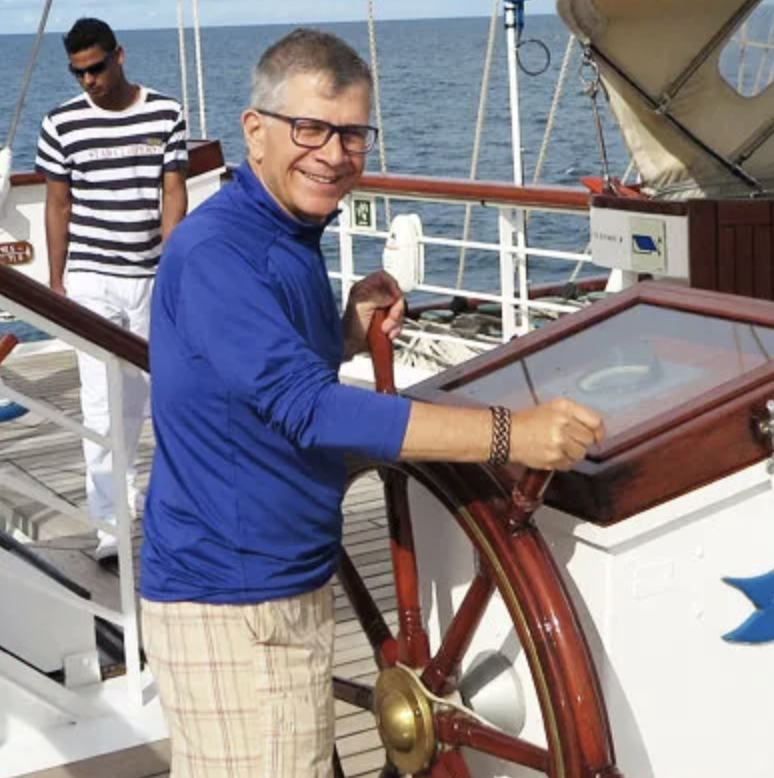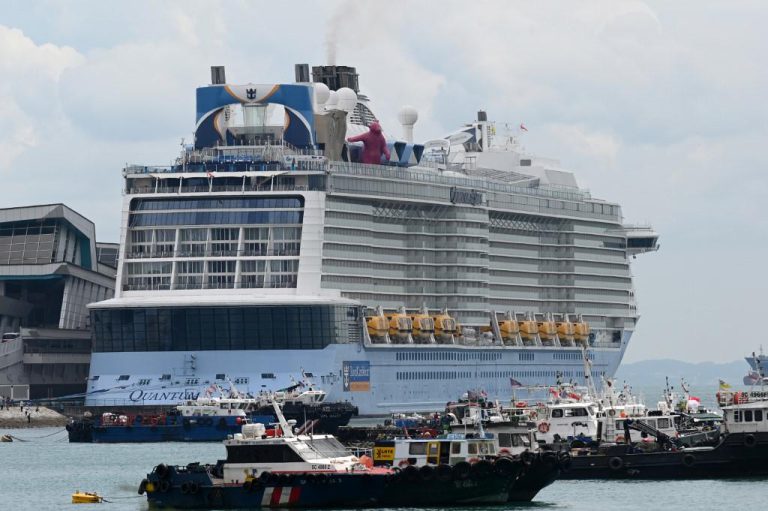Chief medical officer Brendan Murphy sparked a furious debate this week after he maintained it was unlikely international borders would reopen in 2021.
If his prediction is correct, Australians will continue to holiday at home and overseas tourists will be banned – costing the economy billions and hundreds or even thousands of jobs.
In a bid to try and hose down the industry’s anger at the Professor’s prediction, Prime Minister Scott Morrison later said the border shut-down would be monitored week-by-week through the year, and “bubbles” between countries like New Zealand and Singapore were still a possibility.
But at a time when many travel agencies face a life-and-death struggle, Prof Murphy’s remarks were condemned by senior tourism leaders for destroying confidence of travel agents and operators.
Cruise industry chiefs, however, are continuing to push their own plans for a resumption of local sailings.
The delicate diplomacy being deployed by Cruise Lines International Association Australasia is inching towards a potential resolution, which would see thoroughly sanitised ships sailing on within state borders and crewed by quarantined and tested crew.
The vessels would carry limited numbers of tested – and possibly vaccinated – passengers on cruises to nowhere in what the industry believes could be a safe and acceptable bubble.
CLIA MD Joel Katz told Cruise Passenger this morning: “We are engaging with government towards a phased resumption. While international borders remain closed, this would involve local cruises carrying local Australian passengers only, with strict health protocols in place.
“Australia has more than 50 ports and destinations around the coast, including communities crying out for visitation, so this is an opportunity to start to deliver some of the enormous economic opportunity and jobs to Australia that cruise generates.”
One sticking point is how to quarantine large numbers of crew. The government is believed to have rejected the idea of holding them on the ship or counting the journey to Australia, saying they would require proof of quarantine under supervised lockdown.
The industry is watching carefully a planned Ponant voyage which has been approved to sail out of New Zealand next month as a forerunner for this model. It is a model already operating successfully in Singapore, where Royal Caribbean’s Quantum of the Seas and Dream Cruises Genting Dream have found a strong market for cruises to nowhere.
It has been suggested that it will take up to 12 weeks to get large vessels to Australia ready to take passengers. Until the government decides whether to relax its international cruise ship ban, which ends in March, preparations can’t begin.
Vaccinations against COVID-19 are expected to start next month, and news of the roll-out had sparked a fresh wave of confidence among cruisers looking to book itineraries after mid-year, especially on ships sailing Australia or New Zealand.
Mr Murphy’s words may well dent that enthusiasm.
 Professor Murphy, who was the chief medical officer at the beginning of the pandemic, said he thought the borders and mandatory hotel quarantine would remain for some time yet.
Professor Murphy, who was the chief medical officer at the beginning of the pandemic, said he thought the borders and mandatory hotel quarantine would remain for some time yet.
But it was his response on ABC News Breakfast to the question of the likelihood of international borders reopening this year that sparked the most response.
“I think that the answer is probably no,” Professor Murphy said. “I think that we’ll go most of this year with still substantial border restrictions, even if we have a lot of the population vaccinated.
“We don’t know whether that will prevent transmission of the virus.”
Reports indicate, however, the vaccine isn’t a complete answer. Some experts suggest that a patient can still carry the virus and pass it on even though the vaccine is stopping their symptoms.
That would point to the safest journeys would be for vaccinated passengers and crew only – and that has opened up a big debate in the industry already.
Meanwhile, more is now known about how the vaccine will role out.
Training will start in the next two weeks for both the AstraZenica vaccine and Pfizer. And four million people are expected to be inoculated by the end of March.









